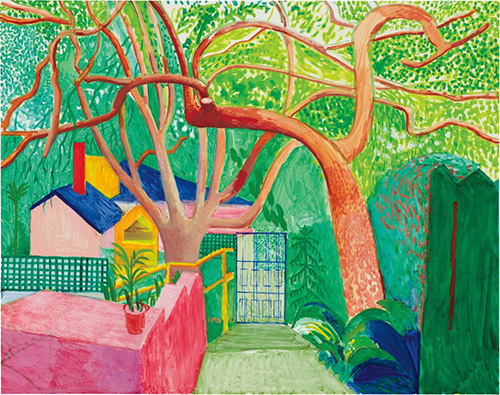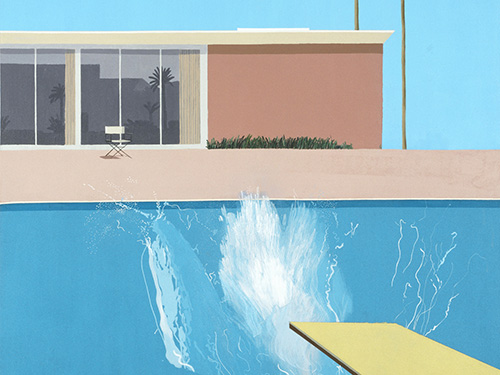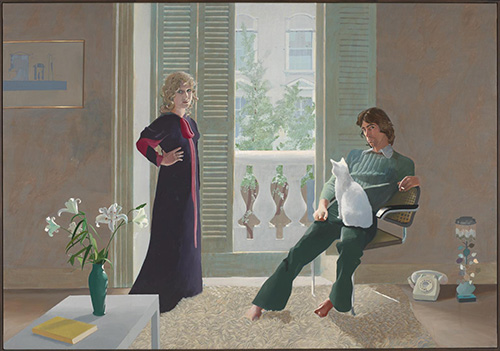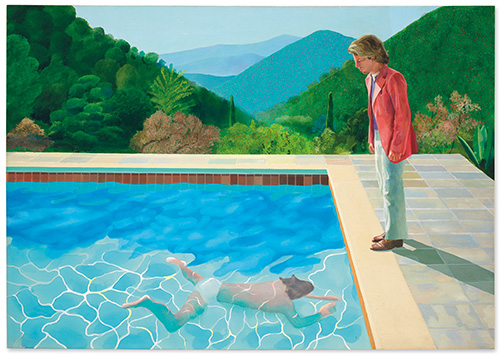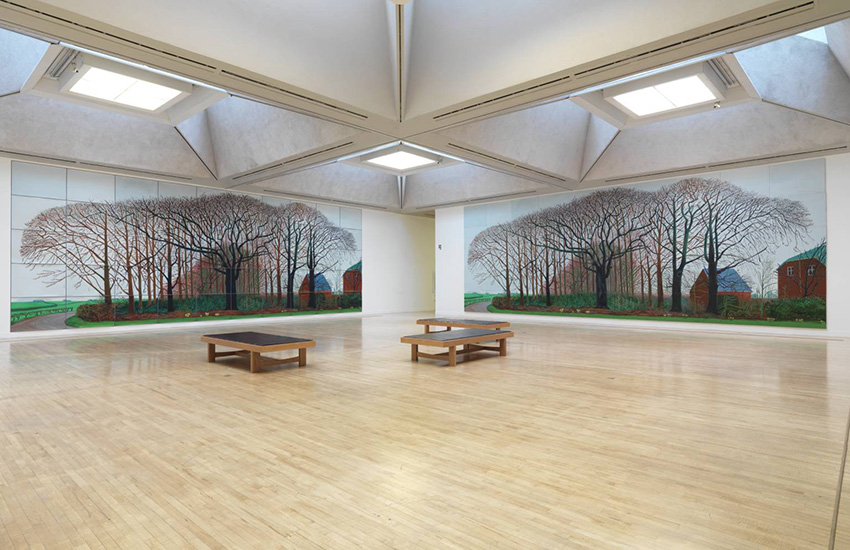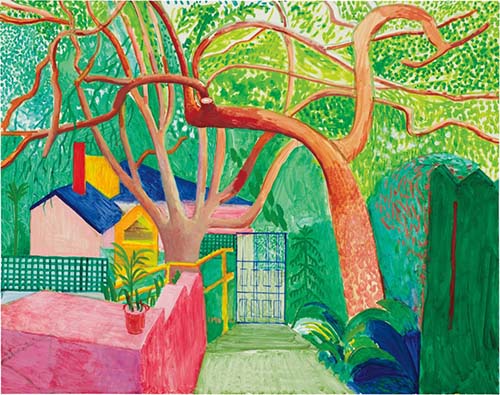
David Hockney and the bright perspective of Hollywood
ArtWizard, 03.06.2019
Rediscovering the Lost Techniques of the Old Masters such as Johannes Vermeer, in which he controversially argues that the use of optical aids such as the camera lucida and camera obscurahas been much more common in European art than previously thought, David Hockney, born in 9 July 1937 is a British painter, draughtsman, printmaker, photographer, designer, and writer, active mainly in the USA. In 1963, he had his first solo show at the Kasmin Gallery in London.
In 1964, Hockney moved to Los Angeles. In that year a swimming pool first appeared in the seminal painting. Over the next several years, portraiture and photography primarily occupied the artist, and he developed an intimate and powerful naturalism in this period.
After a brilliant prize-winning career as a student at the Royal College of Art, Hockney had achieved considerable success by the time he was in his mid-twenties, and he has since consolidated his position as by far the best-known and most critically acclaimed British artist of his generation.
His phenomenal success has been based not only on his flair and versatility as an artist, but also on his colourful and engaging personality, which has made him a recognizable figure even to people not particularly interested in art. In 1961 he emerged as one of the leaders of British Pop Art at the Young Contemporaries exhibition. The artist did not like very much to be called a “Pop” artist, however his works make many references to the popular culture, although not that much like his contemporary art fellows from the American guild. His works are nonetheless using some graffiti-like lettering and are often jokey in mood. His first retrospective exhibition came as early as 1970, at the Whitechapel Art Gallery, London (it subsequently toured to Hanover, Rotterdam, and Belgrade). By this time, he was painting in a weightier, more traditionally representational manner, in which he did a series of large double-portraits of friends, including the well-known Mr. and Mrs. Clark and Percy (1970–1, Tate, London).
As an important contributor to the pop art movement of the 1960s, he is considered one of the most influential British artists of the 20th century. Hockney has owned a home and studio in Bridlington and London, and two residences in California, where he has lived on and off since 1964: one in the Hollywood Hills, one in Malibu, and an office and archives on Santa Monica Boulevard in West Hollywood, California. The portraits he makes and the figures he depicts are notable for their airy feeling of space and light and the subtle flattening and simplification of forms, as well as for the sense of stylish living they capture. Hockney often paints the people and places he knows best (his art is frequently autobiographical) and has memorably celebrated his romance with Los Angeles (he first visited the city in 1963 and settled there in 1978), particularly in his many paintings featuring swimming pools (A Bigger Splash, 1967, Tate, London). In 15 November 2018, Hockney's 1972 work Portrait of an Artist (Pool with Two Figures) is sold at Christie's auction house in New York City for $90 million (£70 million), and became the most expensive work by a living artist sold at auction. This broke the previous record, set by the 2013 sale of Jeff Koons' Balloon Dog (Orange) for $58.4 million.
In his works Hockney skilfully exploited the qualities of the acrylic paint and has also been outstanding as a graphic artist: his work in this field includes etched illustrations to Cavafy's Poems (1967) and Six Fairy Tales of the Brothers Grimm (1969), as well as many individual prints, often on homoerotic themes. In the 1970s he also came to the fore as a stage designer, notably with his set and costume designs for Stravinsky's The Rake's Progress and Mozart's The Magic Flute, produced at Glyndebourne in 1975 and 1978 respectively. The broader style demanded by stage design has been reflected in his subsequent easel paintings. In the 1980s he experimented a good deal with photography, producing, for example, photographic collages, in which numerous prints are made into a composite patchwork image. Subsequently, he has also produced paintings in a similar style, using canvases arranged in a grid to create a huge overall image: the largest is Bigger Trees Near Warter (2007, Tate), painted in the open air near his Yorkshire studio, which is made up of 50 canvases in a rectangle measuring about 4.5 m by 12 m and is his most monumental work. The huge painting becomes immersive because it is impossible to take it in at a glance. The eyes must scan back and forth, and up and down, even when standing back. Walking along the image, moving through the landscape and continually adjusting your view, facilitates a lived experience in both time and space. This meticulous exploration of time and space unifies this somewhat disparate and visually overwhelming exhibition. Hockney claims that painting will never be replaced by photography because the slick, flat surfaces and frozen instants of time in photographs do not represent the reality of what the constantly scanning eye see. Hockney abandoned painting for a time in the mid-seventies to concentrate on drawing and print-making. Not many paintings were produced during the early eighties either, the artist preferring to spend his time constructing collages from photographs. These photo-collages were recently exhibited in a retrospective of the artist's photography at the Museum of Contemporary Art, Los Angeles.
Hockney's originality as a printmaker was apparent by the time he produced A Rake's Progress, a series of 16 etchings conceived as a contemporary and autobiographical version of William Hogarth's visual narrative. Hockney's large body of graphic work, concentrating on etching and lithography, in itself assured him an important place in modern British and Contemporary art.
